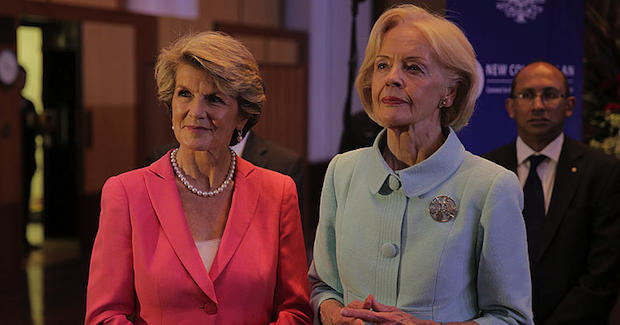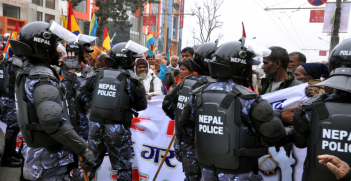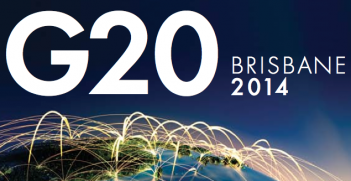A Feminist Foreign Policy?

Australia has provided the world with laudable examples of women in positions of political power, while simultaneously perpetuating a male-dominated ‘blokey’ culture. To what degree, and how, has the presence of women leaders enabled a gender perspective or a different voice on the foreign policy agenda to come to the fore?
‘Playing the gender card’ if you are a woman leader is practically taboo in Australian politics. That is the case even after Julia Gillard’s world famous speech on sexism and misogyny to the Australian parliament, directed at opposition leader Tony Abbott, which received over 2.5 million YouTube views and has its own Wikipedia page.
Unlike domestic politics and policy, the promotion of gender issues within foreign policy is mostly positively received. This may be so because foreign policy is not perceived to affect power relations at home, or because gender within aid and foreign policy has been strongly promoted under Foreign Affairs Minister Julie Bishop’s tenure even while the overall aid and diplomacy budget shrinks.
In a recent survey on the effectiveness of Australian aid, stakeholders reportedly praised “Bishop’s focus on gender in aid” but noted her lack of executive influence on the overall allocation of funding to foreign aid given the cut from $8 billion per annum under the ALP government in 2012-13 to $5 billion under the Coalition government 2014-2015.
As the country’s first female foreign minister, Julie Bishop has managed the blokey culture of the Coalition government and Australian politics precisely by working the domestic/international divide. Though conventional assumptions on international affairs hold that foreign and defence policymaking are the stuff of high politics and the traditional terrain of men, ironically, the rise of Julie Bishop, the single female cabinet member during the Abbott Coalition government, has taken place largely in the international realm.
Bishop has been able to exercise considerable political leadership on behalf of Australia, representing the country at the United Nations Security Council, vis à vis key allies such as the US and the UK. In these settings, Bishop’s gender has been an advantage for the visibility of the Australian foreign minister role.
What impact, however, has a female foreign minister had on the gender balance in the staffing of foreign policy, that is, in the Department of Foreign Affairs and Trade (DFAT)? Do women leaders make a difference to the advancement of women diplomats and employees?
In 2015, DFAT adopted an internal “women in leadership strategy” to address the imbalance in the senior executive ranks of our chief foreign policymaking bureaucracy. It was guided by a steering committee, led by the DFAT secretary with internal and two external members that included the sex discrimination commissioner. This strategy designated male champions of change in the department and provided gender recruitment targets for senior leaders to meet and report annually as part of their performance reviews.
All managers were expected to lead by example and be aware of their power as role models in embedding change. The 2016 strategy sets overall targets for gender representation by 2018: 40 per cent in senior executive staff (SES) band 1 (currently 36 per cent) and 35 per cent for SES band 2 (currently 25 per cent). It remains to be seen how militantly Ms Bishop and the new female DFAT secretary appointed in 2016, Frances Adamson, will enforce the women in leadership strategy. However, it is a matter of getting your own house in order and practicing what you preach about gender equality abroad at home.
Toward feminist foreign policy?
Successive Australian governments between 2011 and 2015 made impressive commitments to global gender equality and women’s empowerment as a core foreign policy goal. They sought to address this goal across aid programming, economic and international peace and security diplomacy.
In February 2016, Australia adopted a whole of foreign policy gender strategy alongside countries like Sweden, which declared it would conduct an explicitly feminist foreign policy in October 2014, and Norway, which adopted a foreign policy gender strategy in October 2016. Among other things, the strategy ups Australia’s commitment to advancing gender equality as a primary or secondary objective in 80 per cent of all development aid.
Former Prime Minister Julia Gillard and Minister for Foreign Affairs Julie Bishop have led women’s inclusion and gender mainstreaming strategies in foreign policy. Positioning herself as Australia’s first female foreign minister on the world stage, Bishop in particular has taken the advocacy of gender equality in foreign policy to a new level while promoting Australia as a “top 20 country” (not a ‘middle power’) and major contributor to global governance.
The Coalition government’s gender-inclusive foreign policy approach identifies women and girls both as inputs for global growth benefiting Australia and as disproportionate victims of global insecurities. Australia’s approach is encapsulated by its attempts at improving women’s livelihoods by giving them safe access to markets for conducting business and bolstering women’s leadership and participation in decision-making for greater stability and peace. Echoing economic policymaking, diplomacy and foreign affairs now celebrate private sector investment and the entrepreneurial individual in international development and security arenas while accommodating gendered differences.
Increasingly, what gets done in the name of gender equality in Australian foreign policy is what makes economic sense, where there is an investment case and/or market rationale to be made. In this context, what is the potential for foreign policymaking to be guided by feminist principles? Sweden’s adoption of a “feminist foreign policy” and US President Donald Trump’s impact on US foreign policy already two weeks in—excluding citizens from seven countries from entry into the US and reinstating and expanding the ‘global gag rule’ that bans federal funding for NGOs in foreign countries that provide abortion services or abortion advocacy-make this question germane to Australia.
The need for progress
In Australia there are major gender security issues related to border control and immigration detention impinging on foreign policy. However, these issues have been typically seen as the concern of domestic rather than foreign policy.
Government actors have interpreted the state’s responsibility to prevent violence and protect against gender-specific crimes, primarily in relation to military, diplomatic, peace-building and aid presence, ‘outside’ Australian borders in conflict-affected and post-conflict states. They have not interpreted that responsibility to include non-citizens inside or at Australian borders who have fled conflict zones and gendered oppression.
Australia’s National Action Plan on women, peace and security 2012-2018 does not have a mandate to incorporate the protection of women and their dependents fleeing conflict zones or gender oppression and crossing Australian borders as irregular migrants or asylum-seekers, nor does the Global Ambassador on Women and Girls, Dr Sharman Stone, located in DFAT.
Regrettably, the lack of recognition for the situations of women and children on the move reinforces the boundary between domestic and international politics and its devastating, gender-specific consequences. The limits of gender mainstreaming in foreign policy are manifestly clear in the Australian case.
Jacqui True is professor and director of the Monash Gender, Peace and Security Centre and an Australian Research Council Future Fellow at Monash University, Australia. She is also a non-resident global fellow at the Peace Research Institute, Oslo.
Professor True will be speaking at AIIA Victoria’s “Gender and Foreign Policy” event on 15 February, from 6:00pm to 7:30pm, for the launch of the AIIA’s latest publication Navigating the New International Disorder: Australia in World Affairs 2011-2015—details of discounted rates available to AIIA members are available here. Tickets and event details can be found here.
This article is an extract from True’s chapter in Australia in World Affairs 2011-2015: Navigating the New International Disorder, ‘Gender and Foreign Policy’. It is republished with permission.





